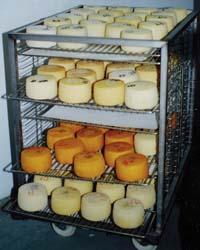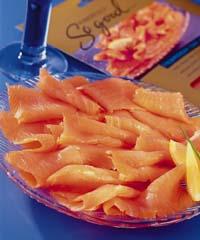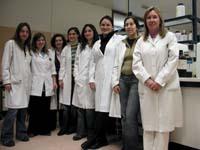Smoked sweets
Currently, smoking of food can be done through so-called fumes or liquid fumes. The latter are obtained from the condensation of smoke and are investigating in detail their composition in the Department of Food Technology of the Faculty of Pharmacy of the UPV.

The researchers then began to analyze how smoking affects food. For this purpose, various foods - cheese, fish and meat - were smoked with running smoke and liquid smoke vapor. The traditional smoking technique consists in accumulating the smoke produced by burning the wood in the food. Thus, the components of the smoke accumulate randomly in the food. As for smoked smoke, there are various forms, such as when using liquid fumes, the food is immersed in liquids.
One of the objectives of the research is to check whether smoking in liquid smoke vapors equally affects food and whether it uses conventional smoking techniques.
Effects of smoke

Smoking changes the color, smell, taste, and texture of food. All these changes are due to the accumulation of smoke components in food. Carbonyl compounds, for example, give the food a sweet taste and aroma and phenolic a smoke or spicy flavor.
New compounds are also generated. In fact, several smoke and food compounds react to each other. Consequently, the organoleptic properties of food are transformed and made more consumer friendly. A chain of reactions occurs between carbonyl compounds and amines, transforming the texture and color of foods.
It also extends the shelf life of the food. This is because smoke is antioxidant and has antimicrobotic properties that delay the oxidation of food and, therefore, reinvention, avoiding the growth of microorganisms. In this way, in addition to improving the sensory properties of food, its conservation is extended. Rancid is a consequence of oxidation. That is, when the food oxidizes, it ages.
However, the smoking process must be carried out properly. Otherwise, food may incorporate toxic components in smoke such as polycyclic aromatic hydrocarbons.
All these aspects are being investigated in the Department of Food Technology of the Faculty of Pharmacy of the UPV.
Liquid smoke vapor
All these changes also occur by smoking food in liquid fumes. In addition, according to the results obtained by the researchers, smoking in liquid smoke vapors offers a wider option and has advantages over conventional smoking.
The basis of this technique is the design of perfume. And, depending on the type of aroma, the dish is added the qualities you like and, in some way, the dish you like is designed. It also lengthens the shelf life of the food, makes its aging more difficult and prevents the growth of microorganisms.
Another important aspect of this method is that it allows to control the amount of toxic components that can accumulate in the food and know them before smoking occurs. Therefore, the safety level of smoked foods in liquid fumes is generally very high.






